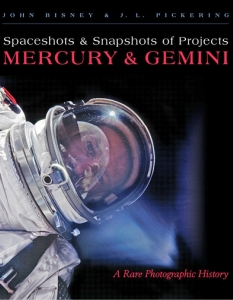Space aficionados will appreciate the thought processes behind this book. How do you make a book of space-related imagery different to the many that have gone before? The authors’ first thought was to include only images that had never been published, reveals Bisney in his preface. Of course, they soon realised that this would be impossible, especially in the era of the Internet, but it sowed a seed.
It’s a fact that some space photos are better, or more important historically, than others and deserve to be published more frequently, but it’s also the case that authors and editors feel the need to include images familiar to the average reader. Although readers of this book will recognise some of the images, most will be new to them and that is the key attraction. The selection is based on the lifetime collection of the other co-author, J L Pickering, who started collecting NASA photos as a boyhood hobby. This book and a companion volume on Apollo, according to foreword contributor Tom Stafford - who flew on four of the 31 missions documented and was “involved in most of the rest” - are “almost like yearbooks” of his experiences with NASA.
Beautifully produced on thick glossy paper, this book will fascinate those who think they know the early American space programme. It is like the difference between the official wedding photos and the snapshots taken by the guests: official NASA publicity photos tend to emphasise the ‘right stuff’, while candid snaps reveal more about character and emotion. Take just three of many such examples: as an alternative to the posed publicity shots it’s nice to see John Glenn in cleanroom gear seriously studying spacecraft manuals with Mercury capsules behind him; Jim Lovell’s cheeky grin as he uses his key to enter the private crew quarters is a joy; and a shot of Lovell’s young son Jay at the consoles with flight director Chris Kraft is simply cute.
It would be wrong to suggest, however, that this is a book of amateur snapshots: the pictures are predominantly sharp, well exposed and often colourful. Moreover, the people shots are interspersed with rocket launches, spacewalks and helicopter landings to provide context, and the overall impression is still one of a high-tech (for the 1960s!) adventure. Definitely one for the bookshelves!
Mark Williamson











